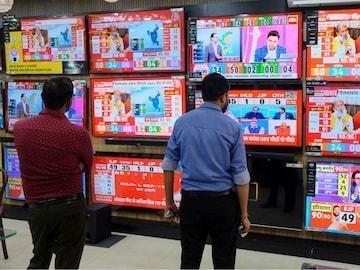
How Accurate Were Delhi Exit Poll Predictions in 2015 & 2020?
Exit polls are a crucial aspect of election analysis, providing valuable insights into the outcome of polls. However, their accuracy is often called into question. In this blog post, we will examine the accuracy of Delhi exit poll predictions in 2015 and 2020.
The 2015 Delhi Assembly elections saw a significant mismatch between exit poll predictions and actual results. According to exit polls, the Aam Aadmi Party (AAP) was predicted to secure 45 seats, while the Bharatiya Janata Party (BJP) was expected to win 24 seats. The Congress party was predicted to win just one seat. However, the actual results told a different story. AAP emerged victorious, winning 67 seats, while the BJP managed to win just three seats. The Congress party, on the other hand, failed to win a single seat.
Fast forward to 2020, and the scenario was similar. Exit polls predicted that AAP would win 54 seats, while the BJP was expected to win 15 seats. However, the actual results showed that AAP won 62 seats, while the BJP managed to win eight seats.
In both instances, exit polls failed to accurately predict the outcome of the elections. So, what went wrong? There are several reasons that could have contributed to the inaccuracy of exit polls.
One reason could be the methodology used by exit pollsters. Exit polls involve surveying a sample of voters who have already cast their ballots. However, this approach can be flawed if the sample is not representative of the entire electorate. In Delhi, for instance, the voter demographics are diverse, with a significant proportion of voters belonging to the younger age group. If the sample of exit poll respondents does not accurately reflect this demographic, the results may be biased.
Another reason could be the lack of transparency in exit poll methodology. Exit pollsters often use proprietary methods to analyze their data, making it difficult to verify the accuracy of their predictions. This lack of transparency can lead to skepticism about the reliability of exit polls.
Furthermore, exit polls are often influenced by preconceived notions and biases. Pollsters may be influenced by their own political leanings or by the prevailing narrative in the media. This can lead to inaccurate predictions, as pollsters may be more likely to predict a particular outcome based on their own beliefs rather than the actual preferences of voters.
In addition, exit polls may not always account for the complex factors that influence voter behavior. In Delhi, for instance, the elections are often influenced by issues such as corruption, law and order, and economic development. If exit pollsters do not accurately assess the importance of these issues to voters, their predictions may be inaccurate.
The 2015 and 2020 Delhi Assembly elections demonstrate the limitations of exit polls. While exit polls can provide valuable insights into the outcome of elections, they are not infallible. In both instances, exit polls failed to accurately predict the outcome of the elections, highlighting the need for a more nuanced approach to election analysis.
In conclusion, the accuracy of Delhi exit poll predictions in 2015 and 2020 was questionable. While exit polls can provide valuable insights into the outcome of elections, they are not infallible. The limitations of exit polls, including methodological flaws, lack of transparency, and biases, can lead to inaccurate predictions. Election analysts and voters alike must be cautious when interpreting exit poll results, and should consider a range of factors when making predictions about the outcome of elections.
News Source:




